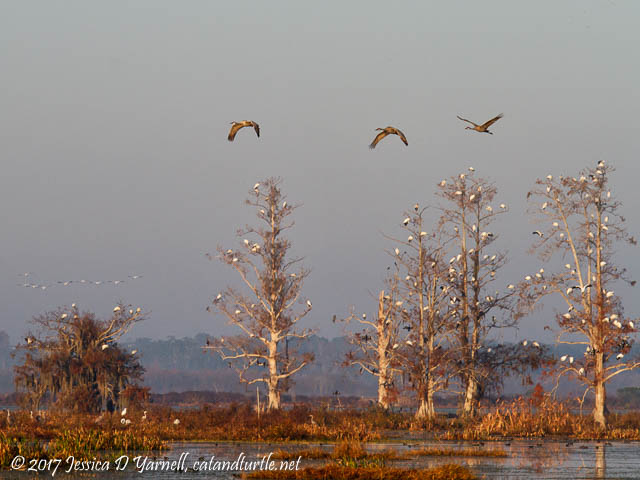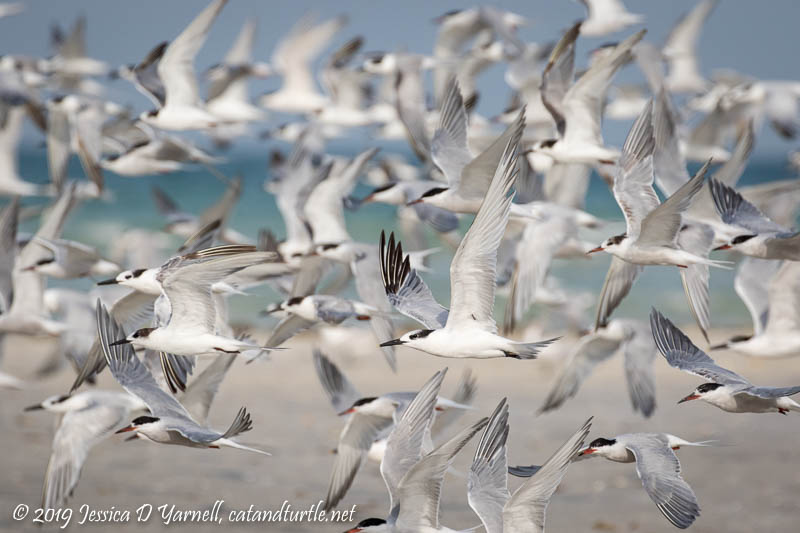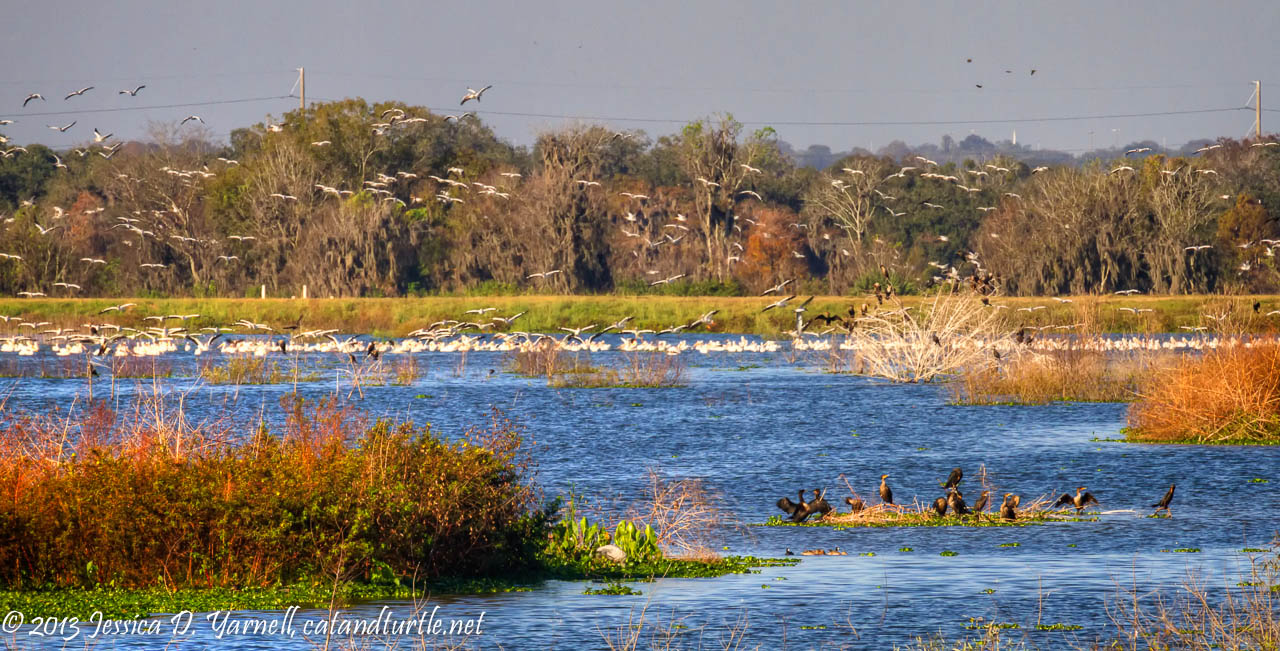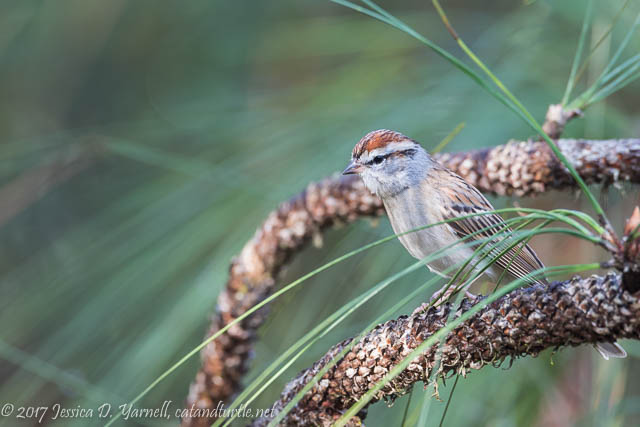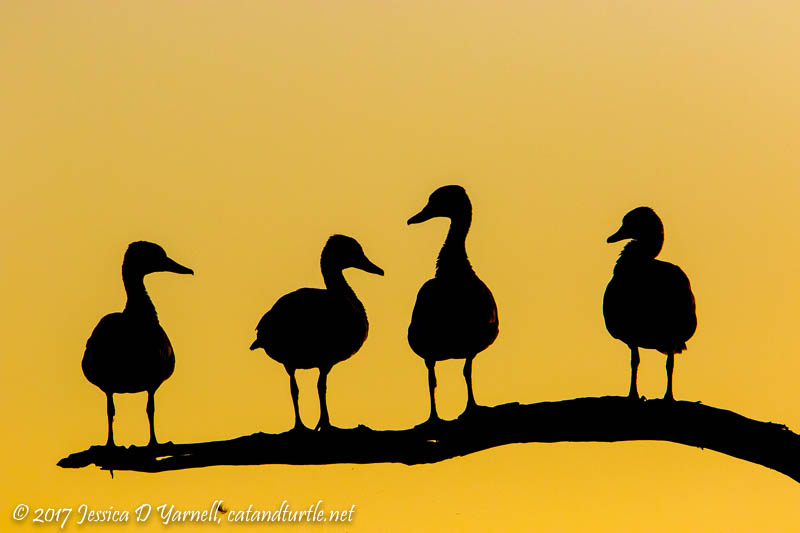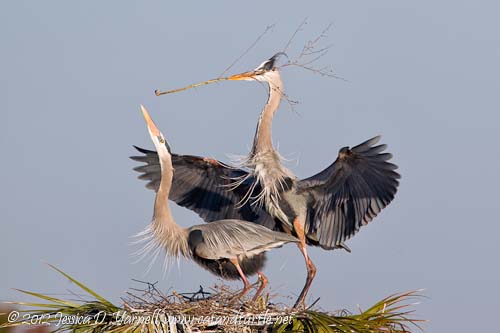This page documents some of the Central Florida bird photography locations that I visit most (and a few other favorite spots for good measure). Part of the reason that I started this blog was to share information about good locations. Hopefully the information below helps you plan your trip or find a particular bird. Click the links to get more details about each site, along with blog posts about those locations.
Alligator Farm
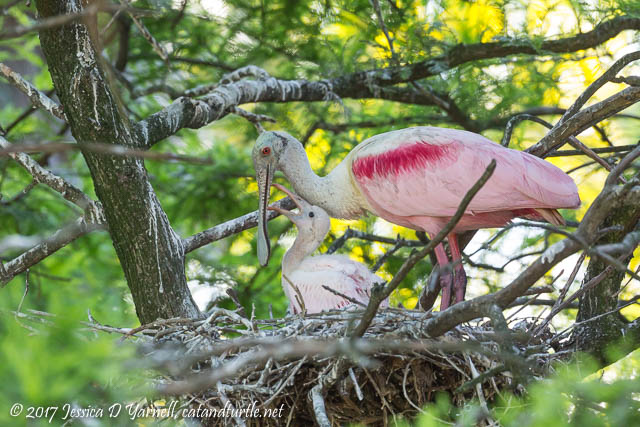 | Description | The St. Augustine Alligator Farm is an alligator zoo with a boardwalk into a wading bird rookery. The alligators rest below the bird nests, protecting the birds from predators like raccoons. The Alligator Farm caters to bird photographers, clipping tree branches so that visitors can look directly into bird nests. It’s not unusual to see baby birds hatching! My favorite part about this place is that you can see Roseate Spoonbills nesting. |
| Photography Advice | Long lenses and intermediate telephotos are both good here. A flash will provide useful fill light on cloudy days and for flight shots. Consider joining the Photography Program for early entry onto the boardwalk. |
| When to Go | February through June |
| Species Photographed (7) | Cattle Egret, Eurasian Collared-Dove, Great Egret, Roseate Spoonbill, Snowy Egret, Tricolored Heron, Wood Stork |
| Website | https://www.alligatorfarm.com |
| eBird | https://ebird.org/hotspot/L614750 |
| Google Map | Click here to view Google Map |
| Trail Map | None |
| My Posts | View my 13 posts from Alligator Farm |
Archie Carr National Wildlife Refuge
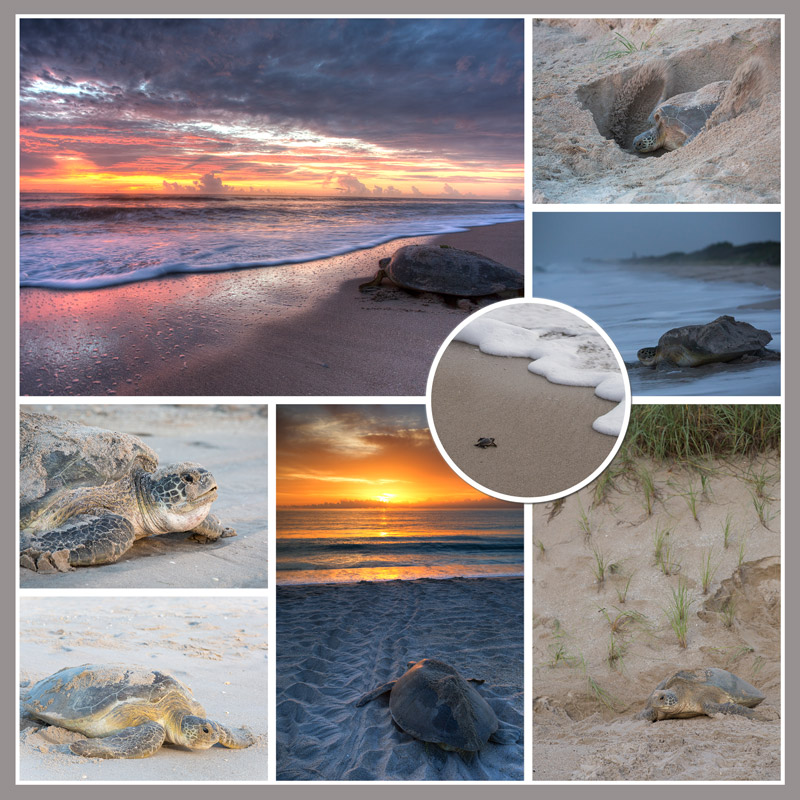 | Description | A beautiful stretch of beach almost untouched by houses and human presence, the Archie Carr National Wildlife Refuge is a beautiful beach for a sunrise walk and a visit with sea turtles. The 20-mile stretch of beach is the most significant area for loggerhead sea turtle nesting in the world, and the most significant area for green turtle nesting in North America. |
| Photography Advice | Turtle nesting season runs from June to September. Get to the beach before sunrise and take a walk. You might get lucky and find a turtle returning to the ocean after laying her eggs! An intermediate telephoto lens is perfect for photographing the turtles. I always take a wide angle for sunrise, too. The turtles are very tired after creating their nests and laying their eggs. Please do not get close to them, block their passage to the ocean, or stand in front of them. |
| When to Go | April through September |
| Species Photographed (5) | Green Sea Turtle, Herring Gull, Loggerhead Sea Turtle, White Ibis, sunrise |
| Website | https://www.fws.gov/refuge/Archie_Carr/ |
| eBird | None |
| Google Map | Click here to view Google Map |
| Trail Map | None |
| My Posts | View my 21 posts from Archie Carr National Wildlife Refuge |
Black Skimmer Colonies
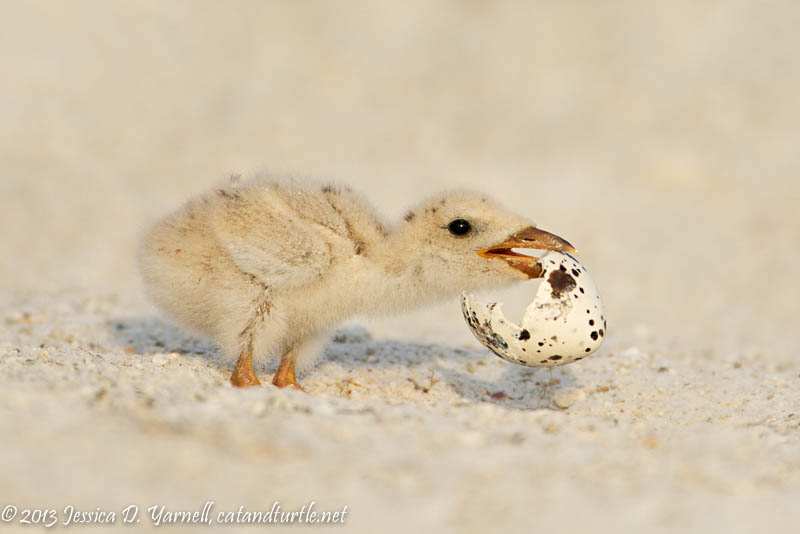 | Description | Black Skimmers nest along beaches of Florida in the summertime. If you are lucky enough to find a colony with young babies, you’ll be in for lots of “awe”-inspiring moments! |
| Photography Advice | Most people prefer intermediate telephotos with these birds. I always bring my Beast also for close-ups. Your best bet is to lie down on the sand. That gets you eye-level with the birds for better shots. It’s less scary to the birds if you pick a spot and stay in it for a while. It’s hard to keep sand out of your gear. Plan ahead and bring a towel or something for your camera to sit on when you’re not using it. Bring a paintbrush to remove sand when you leave. Black Skimmers are listed as a Threatened Species by the State of Florida. It is illegal to bother the birds or touch the babies. Please be respectful of our feathered friends! |
| When to Go | June and July |
| Species Photographed (13) | American Oystercatcher, Black Skimmer, Black-Bellied Plover, Black-Crowned Night-Heron, Brown Pelican, Double-Crested Cormorant, Laughing Gull, Least Tern, Ring-Billed Gull, Royal Tern, Sandwich Tern, White Ibis, Willet |
| Website | None |
| eBird | None |
| Google Map | None |
| Trail Map | None |
| My Posts | View my 38 posts from Black Skimmer Colonies |
Blue Cypress Lake
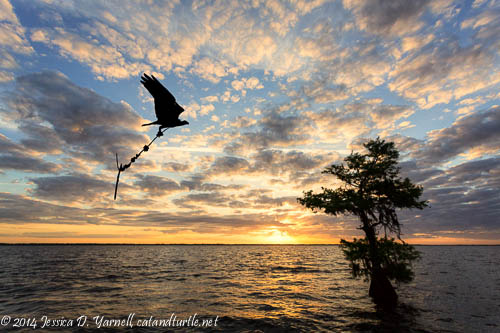 | Description | Blue Cypress Lake is a large lake about 20 miles west of Vero Beach. It is known for the hundreds of Ospreys that nest in its cypress trees from March through May. This place is also incredible for sunrises and sunsets framed with the cypress trees. You can rent a pontoon boat from Middleton Fish Camp, or better yet, go out with one of their guides. |
| Photography Advice | Long lenses and intermediate telephotos are both good here. Don’t forget the wide-angle for sunrise. |
| When to Go | March to May |
| Species Photographed (1) | Osprey |
| Website | http://www.middletonsfishcamp.com/ |
| eBird | https://ebird.org/hotspot/L715880 |
| Google Map | Click here to view Google Map |
| Trail Map | None |
| My Posts | View my 6 posts from Blue Cypress Lake |
Blue Springs State Park
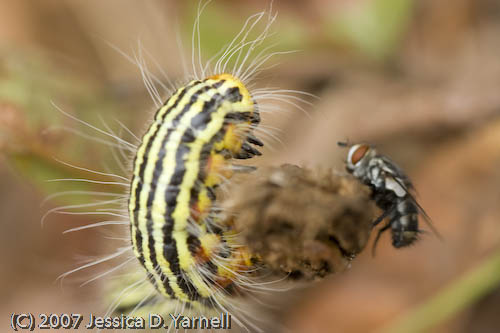 | Description | Blue Springs State Park is a great place to see manatees during the winter. It’s also known for migrants during the spring and fall. |
| Photography Advice | Take the longest lens you want to carry on a hike |
| When to Go | Year Round |
| Species Photographed (0) | None |
| Website | https://www.floridastateparks.org/parks-and-trails/blue-spring-state-park |
| eBird | https://ebird.org/camerica/hotspot |
| Google Map | Click here to view Google Map |
| Trail Map | None |
| My Posts | View my 1 posts from Blue Springs State Park |
Bok Tower
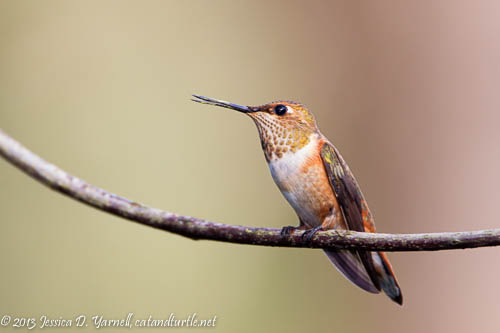 | Description | Bok Tower Gardens is a beautiful garden in Lake Wales, Florida, designed by Frederick Law Olmsted Jr. The gardens surround the historic Bok Tower, whose carillon bells ring out through the gardens on a daily basis. I love to visit Bok Tower for flower photography, as well as during bird migration. It’s a good place for small birds like Eastern Towhees, Tufted Titmice, and Brown Thrashers. It’s also a reliable location in Central Florida for Ruby-Throated Hummingbirds. |
| Photography Advice | I usually take my long lens for bird photography, and a second body with a macro lens for flower photos. |
| When to Go | Year round |
| Species Photographed (23) | Black-and-white Warbler, Blue Jay, Carolina Wren, Eastern Towhee, Gray Catbird, Great Crested Flycatcher, Mute Swan, Northern Cardinal, Northern Mockingbird, Ovenbird, Painted Bunting, Palm Warbler, Pine Warbler, Prairie Warbler, Red-Headed Woodpecker, Red-bellied Woodpecker, Ruby-Throated Hummingbird, Rufous Hummingbird, Tufted Titmouse, White-Eyed Vireo, White-Winged Dove, Wood Duck, Yellow-bellied Sapsucker |
| Website | http://boktowergardens.org/ |
| eBird | https://ebird.org/hotspot/L269400 |
| Google Map | Click here to view Google Map |
| Trail Map | None |
| My Posts | View my 22 posts from Bok Tower |
Brevard Zoo
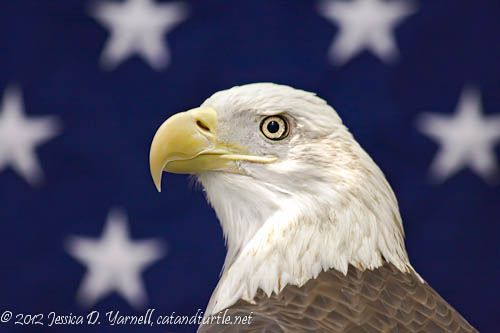 | Description | The Brevard Zoo is a fun little zoo in Melbourne, Florida. It makes a good day trip along with a visit to the Viera Wetlands. You’ll see a good number of animals in a family-friendly environment. |
| Photography Advice | An intermediate telephoto around your neck makes a great walk-around lens. |
| When to Go | Year round |
| Species Photographed (0) | None |
| Website | https://brevardzoo.org/ |
| eBird | https://ebird.org/hotspot/L829934 |
| Google Map | Click here to view Google Map |
| Trail Map | None |
| My Posts | View my 2 posts from Brevard Zoo |
Brian Piccolo Park
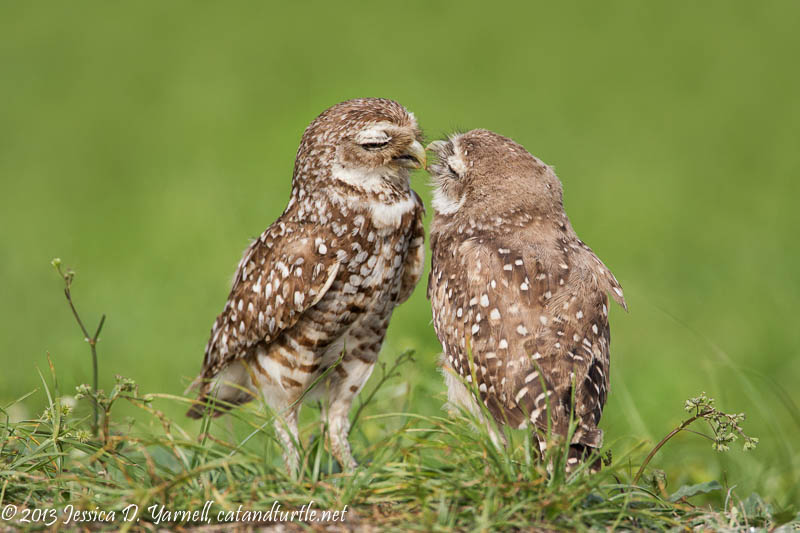 | Description | Brian Piccolo Park is a an athletic park outside of Fort Lauderdale, Florida. It is known to wildlife photographers for the Burrowing Owls that nest in the grassy fields. The nests are blocked off for protection, and the birds are pretty tame. You can settle down with a camera at owl-eye level and photograph all sorts of fun behaviors with these comical owls. |
| Photography Advice | Long lenses and intermediate telephotos are both good here. Don’t leave your cameras or your laptop in the car. |
| When to Go | February through June |
| Species Photographed (1) | Burrowing Owl |
| Website | http://www.broward.org/Parks/BrianPiccoloPark/Pages/Default.aspx |
| eBird | https://ebird.org/hotspot/L299733 |
| Google Map | Click here to view Google Map |
| Trail Map | None |
| My Posts | View my 3 posts from Brian Piccolo Park |
Callaway Gardens
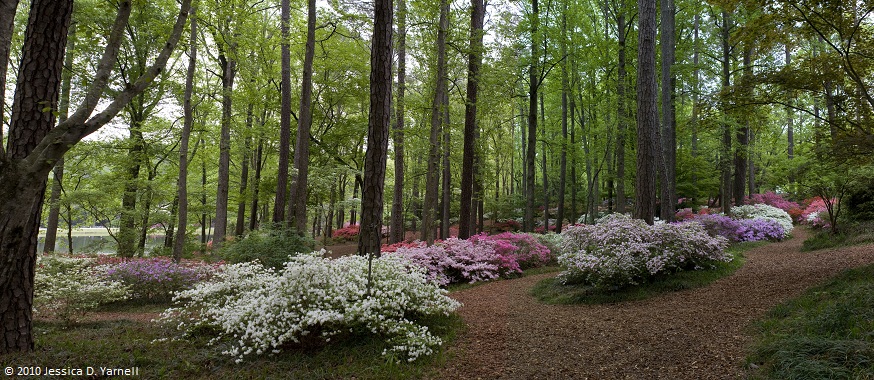 | Description | Callaway Gardens is one of our favorite vacation getaways. The gardens are located about an hour southwest of Atlanta, or a seven-hour drive from Orlando. The gardens are particularly well known for their gorgeous displays of azaleas in the spring, and for the amazing Fantasy in Lights display of Christmas lights in November and December. I also enjoy photographing songbirds in Mr. Cason’s Vegetable Garden. There are daily Birds of Prey shows with easily photographable raptors. The Day Butterfly Center is fun for butterfly photography. We usually stay at the Mountain Creek Inn. We’ve also rented a cottage and enjoyed that very much. Use Azalea Watch to plan your spring trip! |
| Photography Advice | Take as many lenses as you can – long lenses for birds, macro for flowers, and wide-angle for landscapes. It’s all here! |
| When to Go | Year Round |
| Species Photographed (38) | American Goldfinch, American Robin, Bald Eagle, Black-and-white Warbler, Blue Grosbeak, Brown Thrasher, Canada Goose, Cardinal, Carolina Chickadee, Carolina Wren, Cedar Waxwing, Chipping Sparrow, Dark-eyed Junco, Eastern Bluebird, Eastern Phoebe, Eastern Towhee, Eastern Wood-Pewee, Great Blue Heron, Great Horned Owl, Harris's Hawk, House Finch, Mallard, Northern Cardinal, Northern Flicker, Orchard Oriole, Peregrine Falcon, Purple Martin, Red-Eyed Vireo, Red-Tailed Hawk, Red-Winged Blackbird, Ruby-Crowned Kinglet, Ruby-Throated Hummingbird, Song Sparrow, Summer Tanager, Tufted Titmouse, White-Breasted Nuthatch, White-Throated Sparrow, Yellow-Rumped Warbler |
| Website | http://www.callawaygardens.com/ |
| eBird | https://ebird.org/hotspot/L368011 |
| Google Map | Click here to view Google Map |
| Trail Map | None |
| My Posts | View my 25 posts from Callaway Gardens |
Cape Coral Burrowing Owls
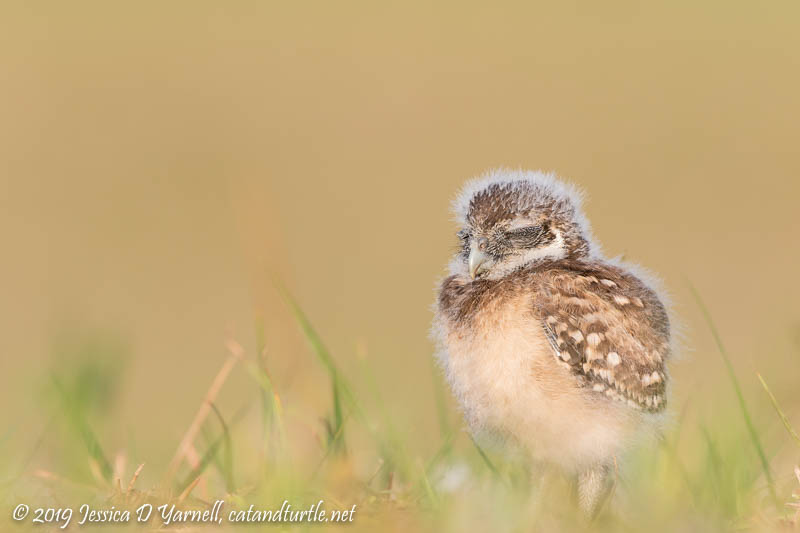 | Description | Cape Coral plays host to the largest number of Burrowing Owl nests in Florida. They are literally all over! Start by the public library and have fun. :) |
| Photography Advice | Most people prefer to use an intermediate telephoto lens for the Burrowing Owls. I use my Beast (600mm) lens to give the birds a little more space and because I prefer tight portraits. If the owls start fussing at you, you’re too close. Please respect our feathered friends! |
| When to Go | February through June |
| Species Photographed (1) | Burrowing Owl |
| Website | http://ccfriendsofwildlife.org/burrowing-owl/ |
| eBird | https://ebird.org/hotspot/L1340123 |
| Google Map | Click here to view Google Map |
| Trail Map | Trail Map |
| My Posts | View my 1 posts from Cape Coral Burrowing Owls |
Chinsegut
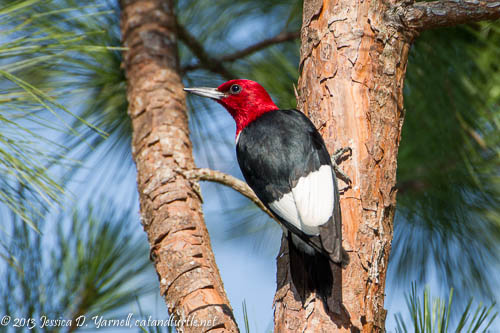 | Description | Chinsegut is a nature preserve located just outside Brooksville. It’s a reliable spot for Red-headed Woodpecker and Eastern Bluebird. |
| Photography Advice | Take the longest lens you want to take on a hike. Keep an eye out for deer! Check the webpage for hours before you go. |
| When to Go | Year Round |
| Species Photographed (10) | American Goldfinch, Carolina Chickadee, House Finch, Northern Cardinal, Pine Warbler, Purple Finch, Red-Headed Woodpecker, Ruby-Throated Hummingbird, Tufted Titmouse, Yellow-bellied Sapsucker |
| Website | https://myfwc.com/education/outdoor-skills/chinsegut/ |
| eBird | https://ebird.org/hotspot/L1948799 |
| Google Map | Click here to view Google Map |
| Trail Map | Trail Map |
| My Posts | View my 3 posts from Chinsegut |
Circle B Bar Reserve
Cockroach Bay Preserve
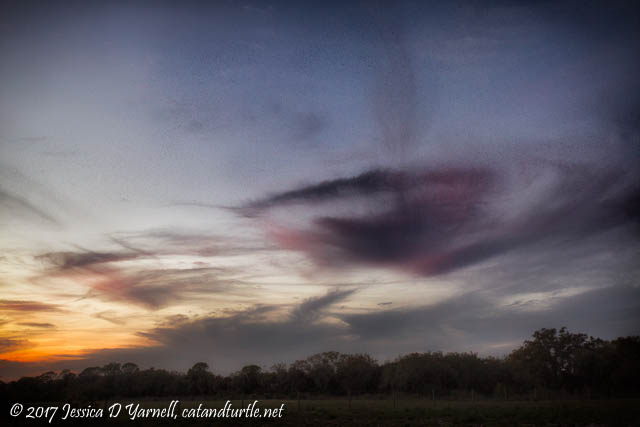 | Description | Cockroach Bay Preserve is an eBird hotspot. It’s best known to me as the location where Tree Swallows congregate prior to spring migration. The millions of birds that form a “murmuration” are most impressive. |
| Photography Advice | To photograph the swallows, take a wide-angle lens on a night without clouds so that the dark mass of birds is silhouetted against the sunset. |
| When to Go | End of March for Tree Swallows |
| Species Photographed (1) | Tree Swallow |
| Website | https://www.hillsboroughcounty.org/en/locations/cockroach-bay-preserve |
| eBird | https://ebird.org/hotspot/L684255 |
| Google Map | Click here to view Google Map |
| Trail Map | None |
| My Posts | View my 1 posts from Cockroach Bay Preserve |
Coral Cove Park
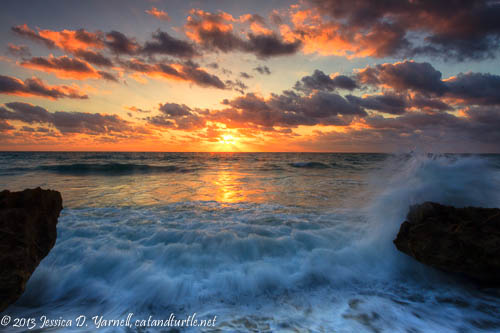 | Description | Coral Cove Park is a small county park near Jupiter, Florida. I love to visit the rocky beaches for sunrise. It’s a good place to go shelling, too. |
| Photography Advice | Take a wide-angle lens and a tripod. An intermediate telephoto might also be good for framing the sunrise. |
| When to Go | Year Round |
| Species Photographed (0) | None |
| Website | http://discover.pbcgov.org/parks/Locations/Coral-Cove.aspx |
| eBird | https://ebird.org/malaysia/hotspot/L1843060 |
| Google Map | Click here to view Google Map |
| Trail Map | None |
| My Posts | View my 3 posts from Coral Cove Park |
Cox Road Kingbird Roost (Polk)
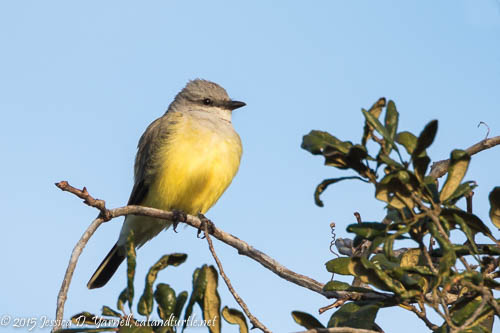 | Description | The Cox Road Kingbird Roost is a dirt road in an orange grove off Highway 60 in Polk County. It is a well-known roost for the Western Kingbird in the wintertime. Scissor-tailed Flycatchers are also frequent visitors there, along with the occasional Fork-tailed Flycatcher. |
| Photography Advice | Take a long lens and a beanbag so that you can shoot from your car window as much as possible. |
| When to Go | October through April |
| Species Photographed (5) | American Robin, Blue-Gray Gnatcatcher, Blue-Headed Vireo, Red-bellied Woodpecker, Western Kingbird |
| Website | None |
| eBird | https://ebird.org/hotspot/L6590839 |
| Google Map | Click here to view Google Map |
| Trail Map | None |
| My Posts | View my 1 posts from Cox Road Kingbird Roost (Polk) |
Emeralda Marsh Conservation Area
 | Description | The Emeralda Marsh Conservation Area has a 4-mile wildlife drive that is open Fridays, Saturdays, and Sundays during the late winter and spring. Check the website for details. |
| Photography Advice | Take your longest lens. I didn’t have a super-productive outing on my first visit but I’d like to try it again. |
| When to Go | Wintertime |
| Species Photographed (0) | None |
| Website | https://www.sjrwmd.com/lands/recreation/emeralda-marsh/ |
| eBird | https://ebird.org/hotspot/L624720?yr=cur&m=&rank=mrec |
| Google Map | Click here to view Google Map |
| Trail Map | None |
| My Posts | View my 1 posts from Emeralda Marsh Conservation Area |
Fort De Soto
Gatorland Rookery
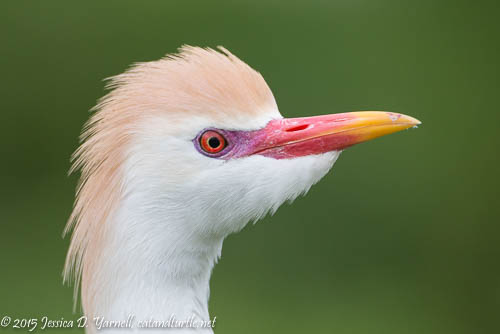 | Description | Gatorland is an Orlando amusement park. While tourists come looking for alligators, birders come to visit the Wading Bird Rookery, a boardwalk over gator territory that gives you close access to dozens of bird nests. The Great Egrets start nesting in early February, and by May, the rookery is a chaos of baby herons, egrets, and anhingas. |
| Photography Advice | Intermediate telephoto lenses will give you great shots of nests right off the boardwalk. I also bring my long lens to isolate birds across the pond. Consider the Photography Pass that lets photographers enter the rookery early in the morning. |
| When to Go | February through June |
| Species Photographed (15) | Anhinga, Boat-Tailed Grackle, Cattle Egret, Common Grackle, Double-Crested Cormorant, European Starling, Gray Catbird, Great Crested Flycatcher, Great Egret, Green Heron, Limpkin, Snowy Egret, Swallow-tailed Kite, Tricolored Heron, Wood Stork |
| Website | http://www.gatorland.com/index.shtml |
| eBird | https://ebird.org/hotspot/L1533887 |
| Google Map | Click here to view Google Map |
| Trail Map | None |
| My Posts | View my 22 posts from Gatorland Rookery |
Greenwood Cemetery Eagle Nest
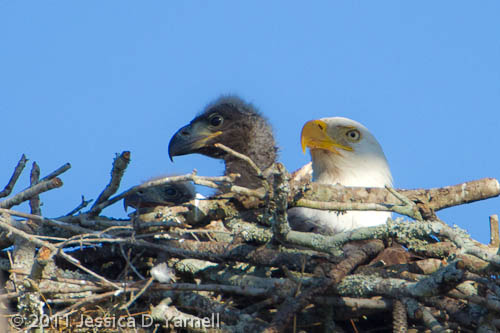 | Description | Nestled in the middle of downtown Orlando is Greenwood Cemetery, which hosts a photogenic Bald Eagle nest. Drive into the cemetery and circle around, looking for the tall pine tree containing the nest. You might also see a coyote or photograph a Wood Duck. |
| Photography Advice | Bring the longest lens you have. |
| When to Go | Springtime |
| Species Photographed (1) | Bald Eagle |
| Website | None |
| eBird | None |
| Google Map | None |
| Trail Map | None |
| My Posts | View my 2 posts from Greenwood Cemetery Eagle Nest |
Holloway Park
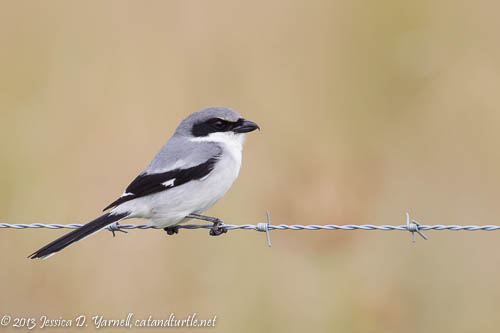 | Description | Holloway Park is an “urban nature park” in Lakeland, FL. It is used for running competitions and it is also a nature preserve. I find that it’s best visited during the winter months when the winter birds are here. One of my friends watches an eagle’s nest on the property. |
| Photography Advice | This is one of my “take an intermediate telephoto and plan to walk” places. You never know what you may find. It’s not one of my go-to places for landscape photography, and I don’t take my Beast unless I’m going to photograph a bird that I’ve previously located. |
| When to Go | Wintertime |
| Species Photographed (2) | Bald Eagle, Loggerhead Shrike |
| Website | https://www.hollowaypark.org/ |
| eBird | https://ebird.org/hotspot/L1837932 |
| Google Map | Click here to view Google Map |
| Trail Map | Trail Map |
| My Posts | View my 2 posts from Holloway Park |
Huguenot Memorial Park
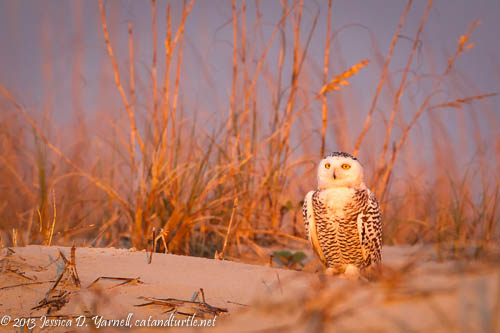 | Description | Huguenot Memorial Park is a stopover location for Red Knots on their migratory path from Tierra del Fuego to the Arctic tundra. Part of it is designated a Critical Wildlife Area for gulls and terns during the nesting season. |
| Photography Advice | An intermediate telephoto lens is good with a long lens if you have one. |
| When to Go | Wintertime and springtime |
| Species Photographed (2) | Black Skimmer, Snowy Owl |
| Website | http://www.coj.net/departments/parks,-recreation-and-community-services/recreation-and-community-programming/huguenot-memorial-park.aspx |
| eBird | https://ebird.org/hotspot/L127286 |
| Google Map | Click here to view Google Map |
| Trail Map | None |
| My Posts | View my 1 posts from Huguenot Memorial Park |
Joe Overstreet Road
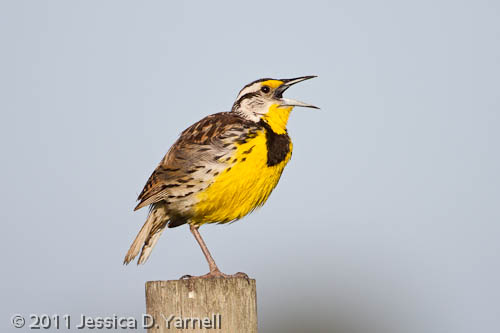 | Description | Joe Overstreet Road is a dirt road in Kenansville, Florida. It is known for the opportunities to photograph Bald Eagles, Crested Caracara, Eastern Meadowlarks (on every fencepost!), and, for the very lucky, Whooping Cranes.
|
| Photography Advice | Take the longest lens you have. |
| When to Go | Wintertime and springtime |
| Species Photographed (14) | American Robin, Bald Eagle, Eastern Meadowlark, Forster's Tern, Great Crested Flycatcher, Killdeer, Loggerhead Shrike, Northern Mockingbird, Red-Shouldered Hawk, Sandhill Crane, Savannah Sparrow, Tree Swallow, Whooping Crane, Wild Turkey |
| Website | http://floridabirdingtrail.com/trail/trail-sections/east-section/joe-overstreet-landing/ |
| eBird | https://ebird.org/hotspot/L269357 |
| Google Map | Click here to view Google Map |
| Trail Map | None |
| My Posts | View my 5 posts from Joe Overstreet Road |
Lake Apopka
Lake County Backroads
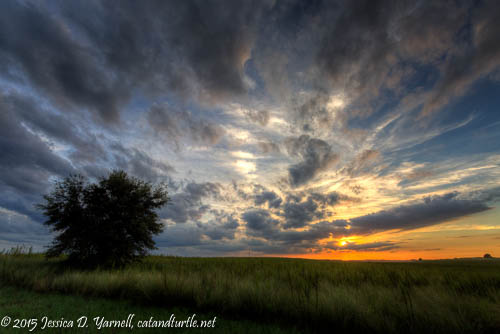 | Description | You never know what you may find when you wander on the backroads. |
| Photography Advice | Take any lens and go exploring! |
| When to Go | |
| Species Photographed (9) | American Kestrel, Burrowing Owl, Cattle Egret, Common Ground-Dove, Common Nighthawk, Eastern Towhee, Loggerhead Shrike, Northern Bobwhite, Red-bellied Woodpecker |
| Website | None |
| eBird | None |
| Google Map | None |
| Trail Map | None |
| My Posts | View my 19 posts from Lake County Backroads |
Lake Hancock Outfall Wetlands
Lake Jesup
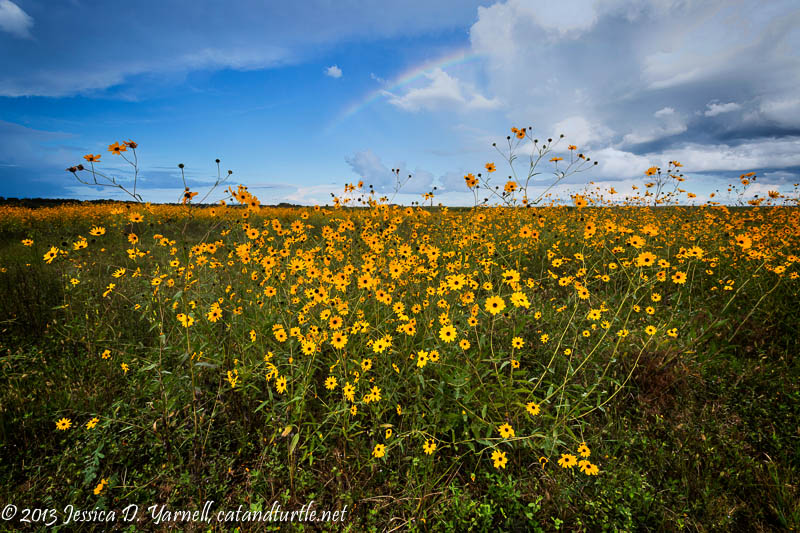 | Description | The Lake Jesup Conversation Area and Marl Bed Flats Tract are a fun place to bird watch. They are also a spectacular landscape photography spot in early October when the fields are covered in yellow sunflowers (weather permitting – non-rainy seasons) |
| Photography Advice | Take a wide-angle lens for sunflower photography. Watch for snakes and take your waders if you have them. |
| When to Go | early October for sunflowers |
| Species Photographed (1) | Sandhill Crane |
| Website | https://www.seminolecountyfl.gov/locations/301551-Lake-Jesup-Park.stml |
| eBird | https://ebird.org/hotspot/L473991 |
| Google Map | Click here to view Google Map |
| Trail Map | None |
| My Posts | View my 2 posts from Lake Jesup |
Lake Louisa State Park
 | Description | Lake Louisa State Park was good for small birds and butterflies on my first visit there. I’m looking forward to going back! |
| Photography Advice | Take the longest lens you want to carry on a hike |
| When to Go | Year Round |
| Species Photographed (0) | None |
| Website | https://www.floridastateparks.org/parks-and-trails/lake-louisa-state-park |
| eBird | https://ebird.org/hotspot/L463470 |
| Google Map | Click here to view Google Map |
| Trail Map | None |
| My Posts | View my 1 posts from Lake Louisa State Park |
Lake Mirror
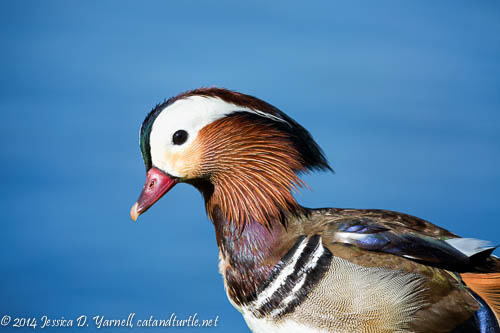 | Description | Lake Mirror, located in downtown Lakeland, Florida, is home to ducks. Walkers and joggers frequently feed the birds, making them very tame for photography. My favorite time to visit is the spring (March through June), when the birds are nesting and raising their young. |
| Photography Advice | I use both my long lens and my intermediate telephoto. |
| When to Go | Springtime |
| Species Photographed (10) | American Coot, Black Skimmer, Black-Necked Swan, Common Gallinule, Mandarin Duck, Ring-Billed Gull, Ruddy Duck, Shelduck, White Ibis, Wood Duck |
| Website | https://www.tripadvisor.com/Attraction_Review-g34373-d4923931-Reviews-Lake_Mirror-Lakeland_Florida.html |
| eBird | https://ebird.org/hotspot/L2235897 |
| Google Map | Click here to view Google Map |
| Trail Map | None |
| My Posts | View my 3 posts from Lake Mirror |
Lake Morton
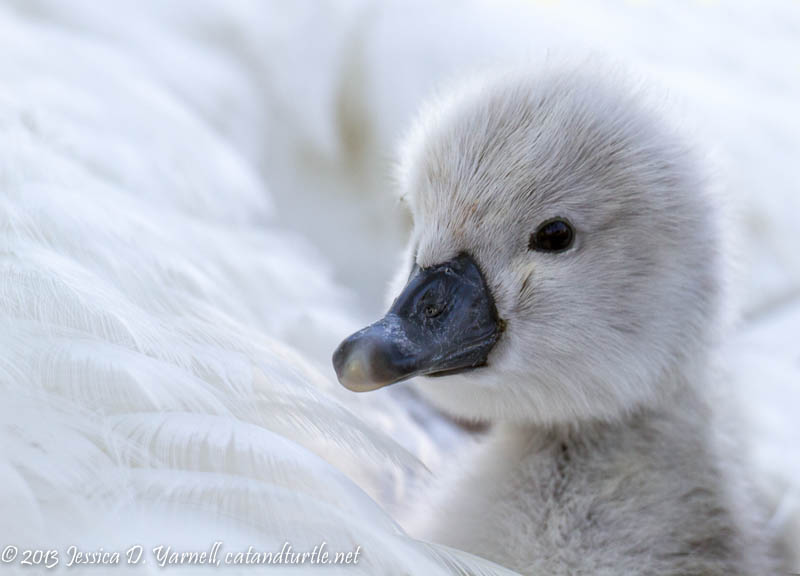 | Description | Lake Morton, located in downtown Lakeland, Florida, is home to about 60 Mute Swans and a myriad of other ducks and geese. Walkers and joggers frequently feed the birds, making them very tame for photography. Even the Wood Ducks are pretty tame. My favorite time to visit is the spring (March through June), when the birds are nesting and raising their young. |
| Photography Advice | I use both my long lens and my intermediate telephoto. |
| When to Go | March through June |
| Species Photographed (36) | American Coot, American White Pelican, Anhinga, Black Swan, Black-Necked Swan, Boat-Tailed Grackle, Bufflehead, Common Gallinule, Double-Crested Cormorant, Great Blue Heron, Green Heron, Indigo Bunting, Laughing Gull, Lesser Scaup, Limpkin, Louisiana Waterthrush, Mallard, Mandarin Duck, Muscovy Duck, Mute Swan, Palm Warbler, Pekin Duck, Red-Shouldered Hawk, Redhead, Ring-Billed Gull, Ring-Necked Duck, Roseate Spoonbill, Ruddy Duck, Scarlet Tanager, Shelduck, Tricolored Heron, White Duck, White Ibis, Wood Duck, Wood Stork, Yellow-Throated Warbler |
| Website | https://www.yelp.com/biz/lake-morton-lakeland |
| eBird | https://ebird.org/hotspot/L1314027 |
| Google Map | Click here to view Google Map |
| Trail Map | None |
| My Posts | View my 62 posts from Lake Morton |
Lake Parker Park
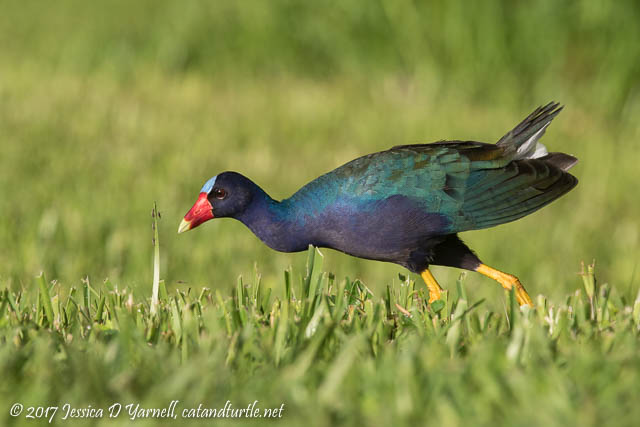 | Description | Lake Parker Park is a neighborhood park with a good number of friendly birds. Purple Gallinules, Limpkins, and Snail Kites are the most notable species. |
| Photography Advice | An intermediate telephoto is all you need to get great bird images at Lake Parker Park. |
| When to Go | Year Round |
| Species Photographed (6) | American Coot, Anhinga, Limpkin, Northern Parula, Pied-Billed Grebe, Purple Gallinule |
| Website | https://www.lakelandgov.net/departments/parks-recreation/lake-parker-park/ |
| eBird | https://ebird.org/hotspot/L877727 |
| Google Map | Click here to view Google Map |
| Trail Map | None |
| My Posts | View my 2 posts from Lake Parker Park |
Lake Woodruff National Wildlife Refuge
 | Description | Lake Woodruff National Wildlife Refuge is a fun place to explore and go birding. I haven’t been there much but I’d like to explore it further. |
| Photography Advice | Take the longest lens that you don’t mind carrying for a multi-mile hike. |
| When to Go | Wintertime and springtime |
| Species Photographed (10) | Black Vulture, Eastern Phoebe, Great Blue Heron, Killdeer, Pied-Billed Grebe, Savannah Sparrow, Snow Goose, Swallow-tailed Kite, White Ibis, Wilson's Snipe |
| Website | https://www.fws.gov/refuge/lake_woodruff/ |
| eBird | https://ebird.org/hotspot/L199461 |
| Google Map | Click here to view Google Map |
| Trail Map | Trail Map |
| My Posts | View my 2 posts from Lake Woodruff National Wildlife Refuge |
Leu Gardens
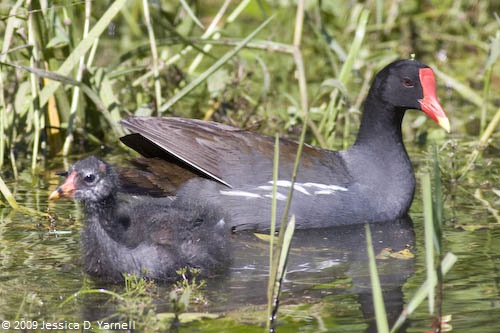 | Description | Leu Gardens is located in downtown Orlando. It is a bit of a migration hotspot, and it is birded regularly throughout the year. |
| Photography Advice | Bring your long lens for birding, and don’t forget the macro lens for flowers – they have a big rose garden!
|
| When to Go | Springtime |
| Species Photographed (3) | Common Gallinule, Northern Cardinal, Ruby-Throated Hummingbird |
| Website | https://www.leugardens.org/ |
| eBird | https://ebird.org/hotspot/L686079 |
| Google Map | Click here to view Google Map |
| Trail Map | None |
| My Posts | View my 2 posts from Leu Gardens |
Little Estero Critical Wildlife Area
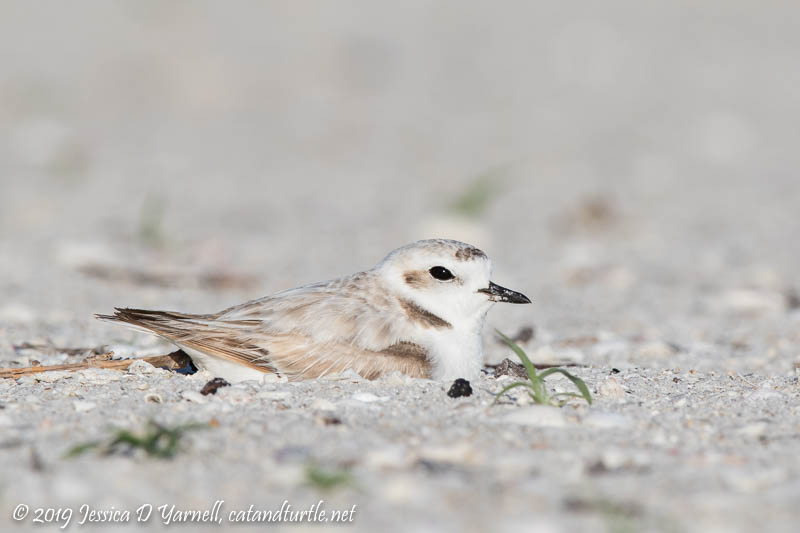 | Description | The Little Estero Critical Wildlife Area is a protected area of Fort Myers Beach where Least Terns, Black Skimmers, Wilson’s Plovers, and even a few Snowy Plovers nest. The Little Estero lagoon is also a well-known bird photography hotspot. |
| Photography Advice | Take a long lens so you can photograph the nesting birds without getting too close. |
| When to Go | June |
| Species Photographed (2) | Least Tern, Snowy Plover |
| Website | http://floridabirdingtrail.com/trail/trail-sections/south-section/little-estero-island-cwa/ |
| eBird | https://ebird.org/hotspot/L1142803 |
| Google Map | Click here to view Google Map |
| Trail Map | None |
| My Posts | View my 2 posts from Little Estero Critical Wildlife Area |
Loggerhead Park
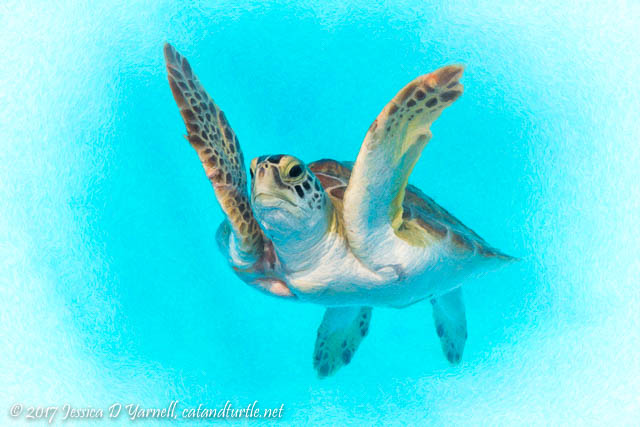 | Description | Loggerhead Park, or the “turtle museum” as it is known in my family, is a sea turtle rehabilitation center. Turtles are housed in large tanks with see-through windows while they are treated for release back into the wild. It’s a fun photo op, especially when combined with one of the center’s turtle walks during sea turtle nesting season. Consider signing up for a turtle walk during nesting season (June and July) |
| Photography Advice | Take an intermediate telephoto. An infrared camera would be fun on the turtle walk, when flash and all other light sources are prohibited. |
| When to Go | Year Round; June-July for turtle walks |
| Species Photographed (2) | Green Sea Turtle, Loggerhead Sea Turtle |
| Website | https://marinelife.org/ |
| eBird | None |
| Google Map | Click here to view Google Map |
| Trail Map | None |
| My Posts | View my 4 posts from Loggerhead Park |
Lowry Park Zoo
 | Description | Family-friendly Lowry Park Zoo is a fun place to photograph all sorts of wildlife. Take your intermediate telephoto and go see what you can find! |
| Photography Advice | Bring an intermediate telephoto lens and have fun! |
| When to Go | Year Round |
| Species Photographed (0) | None |
| Website | http://www.lowryparkzoo.com/ |
| eBird | https://ebird.org/hotspot/L3086509 |
| Google Map | Click here to view Google Map |
| Trail Map | None |
| My Posts | View my 3 posts from Lowry Park Zoo |
Lukas Butterfly Encounter
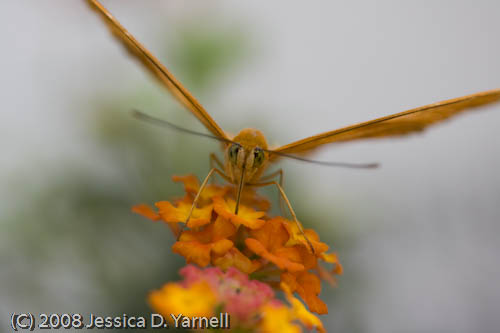 | Description | Lukas Nursery is a great Orlando-area nursery, and the Butterfly Encounter is a free-flight butterfly conservatory. |
| Photography Advice | Macro lenses are good for photographing flowers. A fast intermediate telephoto is my favorite for photographing the fast-moving butterflies. A flash often helps. |
| When to Go | Year Round |
| Species Photographed (0) | None |
| Website | http://www.lukasnursery.com/butterfly.php |
| eBird | None |
| Google Map | Click here to view Google Map |
| Trail Map | None |
| My Posts | View my 2 posts from Lukas Butterfly Encounter |
Maine Trip - July 2013
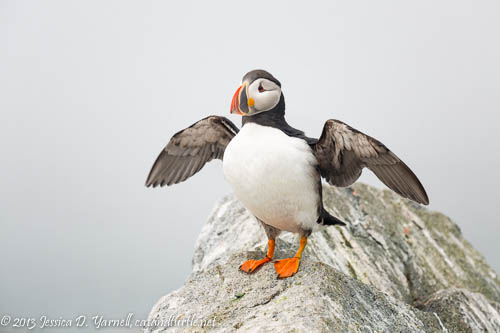 | Description | In July 2013, Rich and I went to Maine to see Atlantic Puffins on Machias Seal Island. We also enjoyed scenic and night photography in Acadia National Park. It was a great trip!! |
| Photography Advice | Go!! |
| When to Go | June-July |
| Species Photographed (10) | Atlantic Puffin, Common Eider, Common Murre, Great Black-Backed Gull, Great Shearwater, Least Tern, Northern Gannet, Northern Rough-Winged Swallow, Piping Plover, Razorbill |
| Website | https://acadiamagic.com |
| eBird | None |
| Google Map | None |
| Trail Map | None |
| My Posts | View my 9 posts from Maine Trip - July 2013 |
Marineland Beach
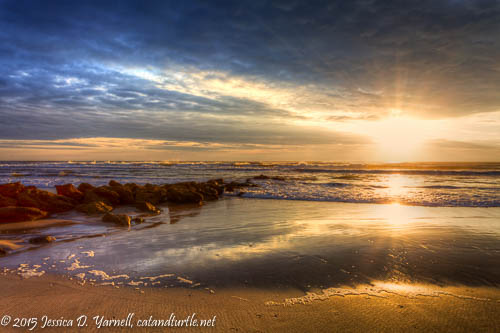 | Description | Marineland Beach has some great rock formations that add foreground interest to Atlantic Ocean sunrise images. No two mornings are the same! |
| Photography Advice | A wide-angle lens is best for landscape sunrise shots. |
| When to Go | Year Round |
| Species Photographed (1) | Snowy Egret |
| Website | None |
| eBird | None |
| Google Map | None |
| Trail Map | None |
| My Posts | View my 7 posts from Marineland Beach |
Marshall Hampton Reserve
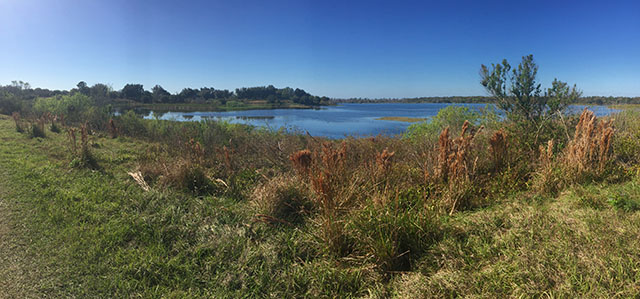 | Description | The Marshall Hampton Reserve is just down the road from the Circle B Bar Reserve. It’s a nice place for a long hike, although it’s not as birdy as Circle B. |
| Photography Advice | Take the longest lens that you don’t mind carrying for a multi-mile hike. |
| When to Go | Wintertime and springtime |
| Species Photographed (3) | American Coot, Anhinga, White-Eyed Vireo |
| Website | http://www.polknature.com/explore/marshall-hampton-reserve |
| eBird | https://ebird.org/hotspot/L1283161 |
| Google Map | Click here to view Google Map |
| Trail Map | Trail Map |
| My Posts | View my 1 posts from Marshall Hampton Reserve |
Matanzas Tern Colony
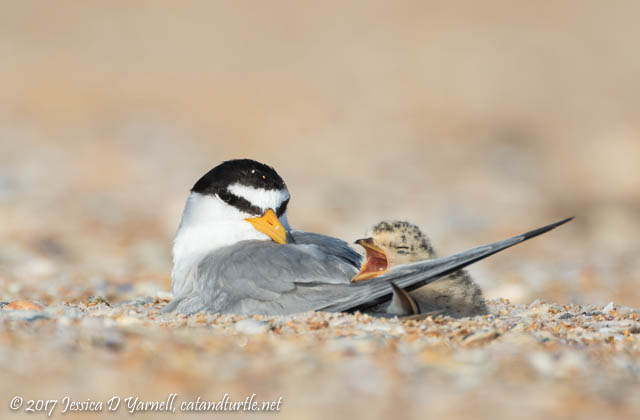 | Description | This used to be the biggest Least Tern nesting colony in Florida. |
| Photography Advice | Go early, stay low, and enjoy :) If the birds are agitated or try to poop on you, you are too close. It’s dangerous for the babies to be left alone for too long because the parents are trying to chase off photographers. Please respect the birds. |
| When to Go | Early June |
| Species Photographed (3) | Least Tern, Semipalmated Sandpiper, Wilson's Plover |
| Website | None |
| eBird | None |
| Google Map | None |
| Trail Map | None |
| My Posts | View my 20 posts from Matanzas Tern Colony |
Mead Gardens
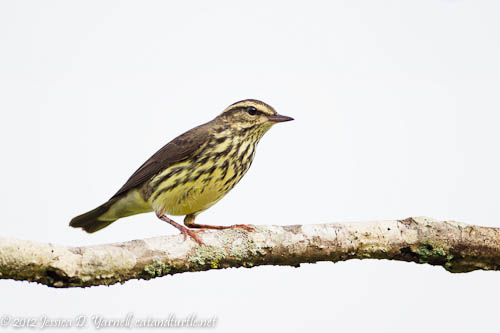 | Description | Mead Gardens, nestled in downtown Winter Park, is a well-known migrant trap in Central Florida. Visit during April migration and you never know what you’ll see. |
| Photography Advice | The longer your lens, the better chance of capturing those little migrant birds! |
| When to Go | April |
| Species Photographed (4) | Common Yellowthroat, Northern Waterthrush, Prairie Warbler, Red-bellied Woodpecker |
| Website | http://www.meadgarden.org/ |
| eBird | https://ebird.org/hotspot/L127353 |
| Google Map | Click here to view Google Map |
| Trail Map | None |
| My Posts | View my 5 posts from Mead Gardens |
Merritt Island National Wildlife Refuge
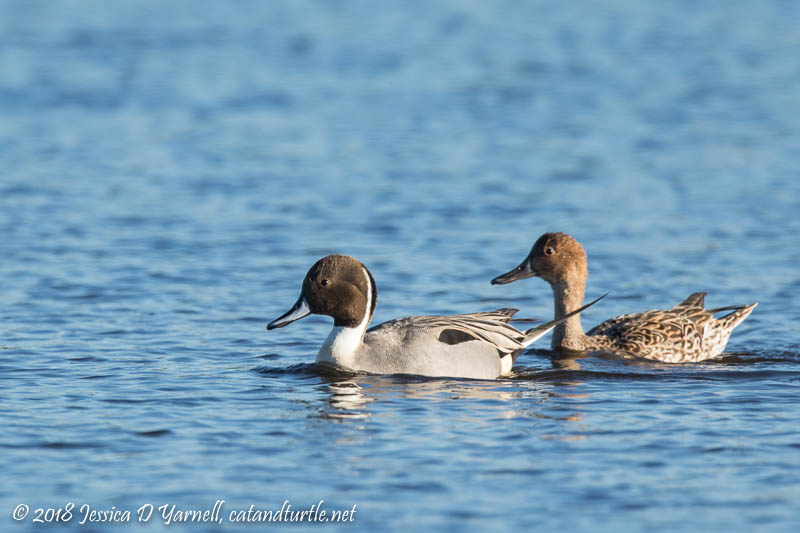 | Description | Merritt Island National Wildlife Refuge is well-known for wildlife photography. Black Point Wildlife Drive allows you to stay in the air-conditioning and see lots of birds. Canaveral National Seashore is beautiful. My favorite time of year to go is during the winter, when the refuge is covered in migrant ducks, pelicans, and other birds. It’s easy to find Roseate Spoonbills in breeding plumage in January and February. |
| Photography Advice | Take your longest lens. Windy days tend to be less birdy. Be aware that hunting is allowed on parts of the refuge. |
| When to Go | Winter and spring |
| Species Photographed (38) | American Avocet, American Coot, American Goldfinch, American White Pelican, American Wigeon, Black Tern, Black-Necked Stilt, Blue-Winged Teal, Cinnamon Teal, Clapper Rail, Common Loon, Dunlin, Eastern Meadowlark, Florida Scrub-Jay, Great Egret, Greater Yellowlegs, Green Heron, Hooded Merganser, Horned Grebe, Least Sandpiper, Lesser Yellowlegs, Little Blue Heron, Loggerhead Shrike, Long-tailed Duck, Northern Pintail, Northern Shoveler, Red-Breasted Merganser, Reddish Egret, Ring-Billed Gull, Roseate Spoonbill, Scissor-tailed Flycatcher, Snow Bunting, Sora, Tricolored Heron, Turkey Vulture, White Ibis, White-Eyed Vireo, Willet |
| Website | http://www.fws.gov/merrittisland/ |
| eBird | https://ebird.org/hotspot/L127381 |
| Google Map | Click here to view Google Map |
| Trail Map | Trail Map |
| My Posts | View my 18 posts from Merritt Island National Wildlife Refuge |
Moccasin Island Tract
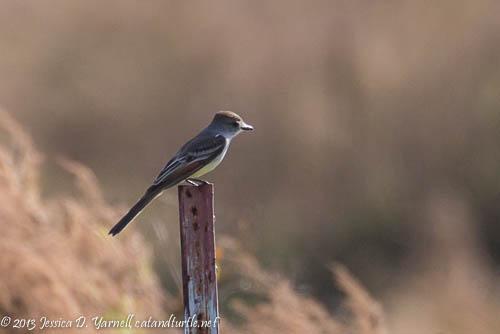 | Description | Moccasin Island is part of the River Lakes conservation area. |
| Photography Advice | There isn’t much wildlife easily photographed from your vehicle. I go when there is a rare bird in the area. |
| When to Go | Winter and spring |
| Species Photographed (3) | Ash-throated Flycatcher, Eastern Meadowlark, Loggerhead Shrike |
| Website | http://spacecoast-florida.com/moccasin-island/ |
| eBird | https://ebird.org/hotspot/L857180 |
| Google Map | Click here to view Google Map |
| Trail Map | None |
| My Posts | View my 1 posts from Moccasin Island Tract |
Oakland Nature Preserve
Orlando Wetlands
Other Places
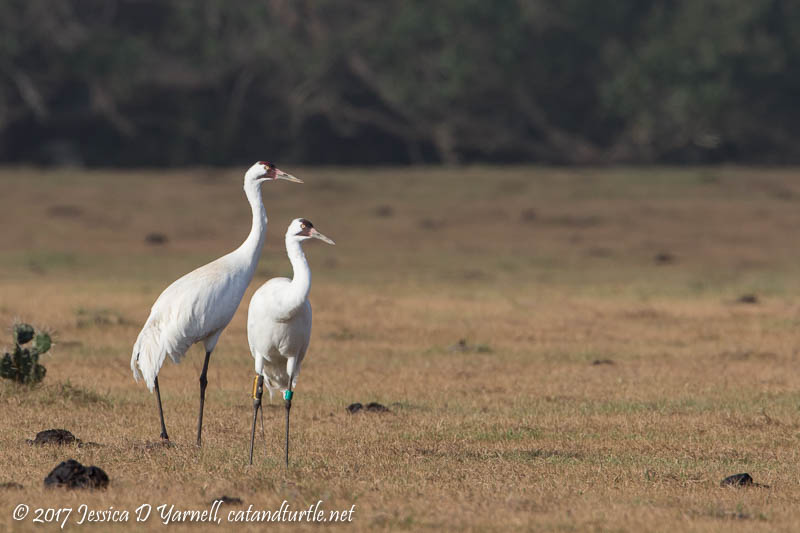 | Description | Other places that I don’t visit frequently, or places that I won’t identify in order to protect the wildlife that I’ve photographed. |
| Photography Advice | Research your local hot spots. Get out and explore. You never know what you’ll find! |
| When to Go | Year Round |
| Species Photographed (33) | Bald Eagle, Barn Owl, Bonaparte's Gull, Bufflehead, Burrowing Owl, Eastern Bluebird, Eastern Meadowlark, Florida Scrub-Jay, Great Black-Backed Gull, Great Blue Heron, Great Horned Owl, Herring Gull, Hooded Merganser, Limpkin, Loggerhead Sea Turtle, Mountain Bluebird, Muscovy Duck, Mute Swan, Red-Headed Woodpecker, Ring-Billed Gull, Ruby-Throated Hummingbird, Ruddy Turnstone, Ruff, Sandhill Crane, Savannah Sparrow, Scissor-tailed Flycatcher, Snail Kite, Snow Bunting, Snowy Egret, Swallow-tailed Kite, Whooping Crane, Wood Duck, Yellow-breasted Chat |
| Website | None |
| eBird | None |
| Google Map | None |
| Trail Map | None |
| My Posts | View my 30 posts from Other Places |
PEAR Park
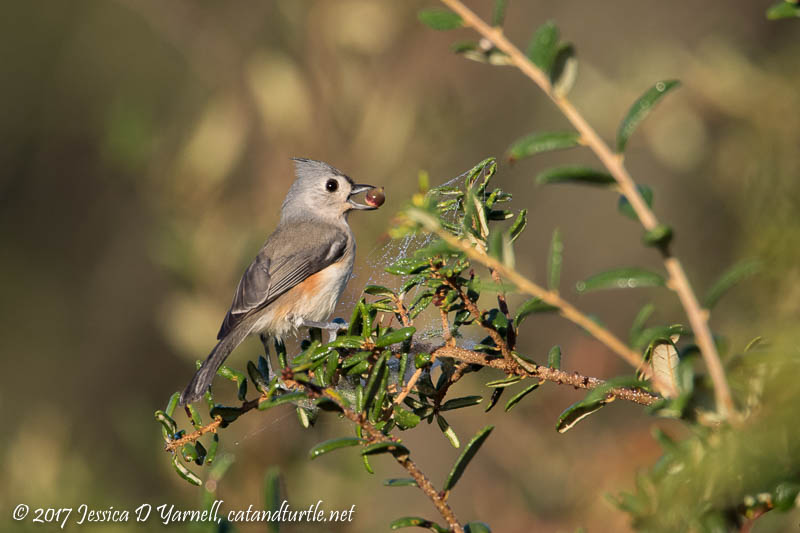 | Description | Palatlakaha Environmental and Agricultural Reserve (PEAR) Park is a great place to look for wintering sparrows. I like wandering through the Scrub Trail area, looking for bluebirds and kestrels and other little birds. |
| Photography Advice | Take your longest lens – the birds are more skittish here than at more populated locations. |
| When to Go | Winter and springtime |
| Species Photographed (14) | American Crow, American Kestrel, Blue-Gray Gnatcatcher, Clay-colored Sparrow, Eastern Bluebird, Eastern Phoebe, Grasshopper Sparrow, House Finch, Pine Warbler, Red-bellied Woodpecker, Ruby-Crowned Kinglet, Swamp Sparrow, Tufted Titmouse, White-Crowned Sparrow |
| Website | https://www.lakecountyfl.gov/offices/parks_and_trails/pear_park.aspx |
| eBird | https://ebird.org/hotspot/L371829 |
| Google Map | Click here to view Google Map |
| Trail Map | Trail Map |
| My Posts | View my 3 posts from PEAR Park |
Polk Rookery
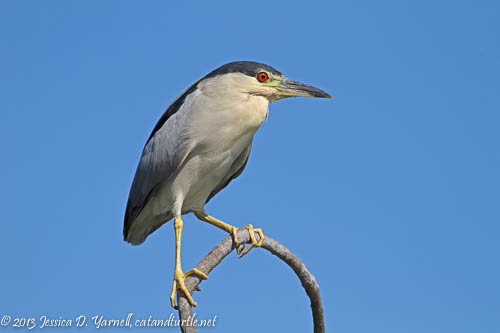 | Description | My friend Herman sometimes takes my dad and me to the Polk Rookery. It’s a great place to photograph wading birds at their nests. My favorites are the Roseate Spoonbill nests, and Brown Pelicans nest here as well. I’ve been asked to not disclose the location in order to protect the nesting habitat. You need a boat to get there, anyway. |
| Photography Advice | Early mornings and late afternoons are the best time to observe the nesting birds. |
| When to Go | Springtime |
| Species Photographed (13) | Anhinga, Black-Crowned Night-Heron, Brown Pelican, Cattle Egret, Double-Crested Cormorant, Glossy Ibis, Great Blue Heron, Great Egret, Least Bittern, Roseate Spoonbill, Snowy Egret, White Ibis, Wood Stork |
| Website | None |
| eBird | None |
| Google Map | None |
| Trail Map | None |
| My Posts | View my 6 posts from Polk Rookery |
Sandhill Crane Nest
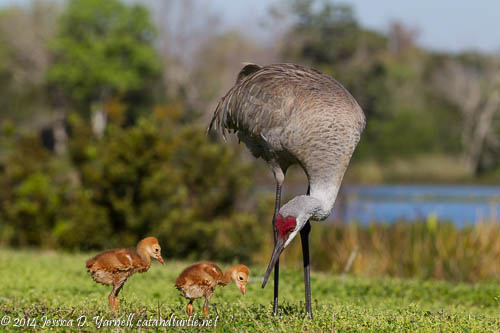 | Description | Sandhill Crane nest in Orlando, FL. Exact location not disclosed. |
| Photography Advice | None |
| When to Go | March |
| Species Photographed (2) | Sandhill Crane, Yellow-Rumped Warbler |
| Website | None |
| eBird | None |
| Google Map | None |
| Trail Map | None |
| My Posts | View my 13 posts from Sandhill Crane Nest |
Sandhill Crane Nest #2
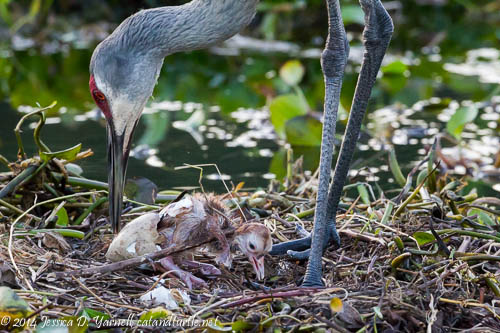 | Description | Sandhill Crane nest in Orlando, FL. Exact location not disclosed. |
| Photography Advice | When you find a nest, enjoy it! Resist the temptation to get too close |
| When to Go | March |
| Species Photographed (1) | Sandhill Crane |
| Website | None |
| eBird | None |
| Google Map | None |
| Trail Map | None |
| My Posts | View my 8 posts from Sandhill Crane Nest #2 |
Sanibel Island
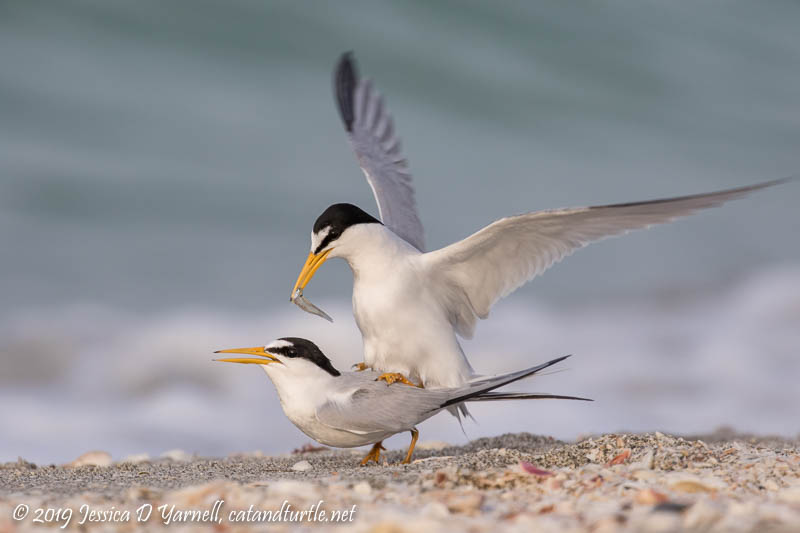 | Description | Sanibel Island is a fun place to vacation and bird-watch. During spring migration, check out the lighthouse area that is a hotspot for visiting warblers and songbirds. The beaches play host to terns and gulls during the summer breeding season. Wading birds can be found year-round in Ding Darling National Wildlife Refuge. End your day with a gorgeous sunset over the Gulf of Mexico. |
| Photography Advice | Take as many lenses as you can carry! |
| When to Go | Year Round |
| Species Photographed (7) | Least Tern, Painted Bunting, Prothonotary Warbler, Red-bellied Woodpecker, Royal Tern, Sandwich Tern, Yellow Warbler |
| Website | None |
| eBird | https://ebird.org/hotspot/L481080 |
| Google Map | Click here to view Google Map |
| Trail Map | None |
| My Posts | View my 2 posts from Sanibel Island |
Seminole Towne Center Pond
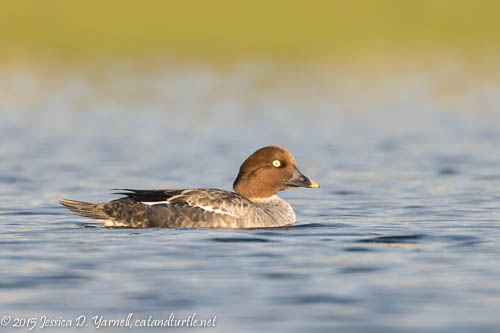 | Description | Given that it is located inside a major shopping area, the Seminole Town Center Pond is an unlikely site for bird photography. But an unusual Common Goldeneye often visits during the winter, joining the Hooded Mergansers and Ring-necked Ducks. If you’re in the area, check it out! |
| Photography Advice | Take a long lens. The birds are skittish and will go to the opposite side of the pond when they see you. |
| When to Go | November through January |
| Species Photographed (4) | Common Goldeneye, Hooded Merganser, Lesser Scaup, Pied-Billed Grebe |
| Website | None |
| eBird | https://ebird.org/hotspot/L4129154 |
| Google Map | Click here to view Google Map |
| Trail Map | None |
| My Posts | View my 4 posts from Seminole Towne Center Pond |
Silver Springs
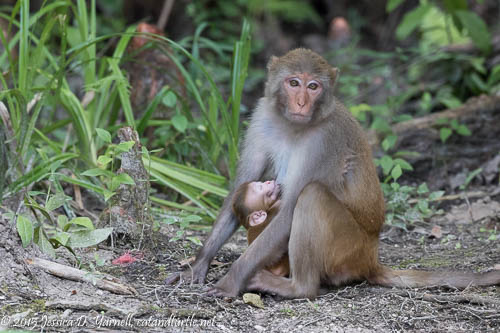 | Description | Silver Springs State Park, formerly known as Silver River State Park, is a Florida State Park located on the Silver River in Marion County. The park contains Silver Springs, Florida’s first tourist attraction. The Silver Springs attraction dates to the 1870s.
|
| Photography Advice | Book a cruise down the river and you might see the famous wild monkeys. |
| When to Go | Year Round |
| Species Photographed (2) | Red-Shouldered Hawk, Wood Duck |
| Website | None |
| eBird | None |
| Google Map | None |
| Trail Map | None |
| My Posts | View my 2 posts from Silver Springs |
Stick Marsh
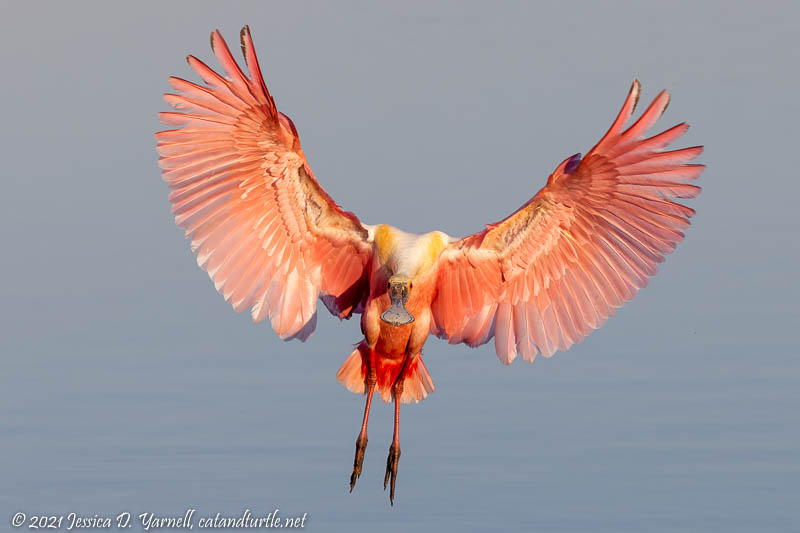 | Description | The Stick Marsh features a wading bird rookery visible from the shoreline. Nesting Roseate Spoonbills make this Spoonbill Heaven! |
| Photography Advice | I preferred my 100-500mm lens for flight shots. It’s important to remember to zoom back so that you don’t clip the birds’ wings. The rookery is closed to boater traffic. Rookery season runs from January through July. |
| When to Go | January through early April |
| Species Photographed (1) | Roseate Spoonbill |
| Website | https://myfwc.com/conservation/terrestrial/cwa/stick-marsh/ |
| eBird | https://ebird.org/hotspot/L578857 |
| Google Map | None |
| Trail Map | None |
| My Posts | View my 1 posts from Stick Marsh |
Tibet-Butler Nature Preserve
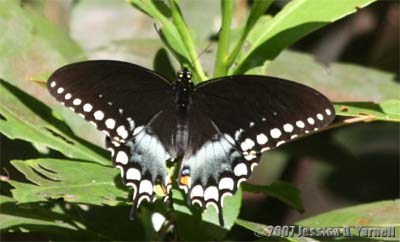 | Description | The Tibet-Butler Preserve has a series of hiking trails that let you view wading birds and songbirds |
| Photography Advice | Take the longest lens you want to carry on a hike |
| When to Go | Winter and spring |
| Species Photographed (2) | Downy Woodpecker, Northern Parula |
| Website | https://floridahikes.com/tibetbutler |
| eBird | https://ebird.org/hotspot/L840481 |
| Google Map | Click here to view Google Map |
| Trail Map | None |
| My Posts | View my 1 posts from Tibet-Butler Nature Preserve |
Venice Rookery
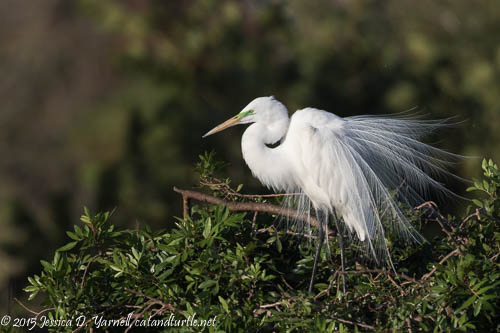 | Description | The Venice Rookery is a small island where Great Blue Herons and other wading birds nest. It’s an internationally recognized location for bird photography. |
| Photography Advice | You’ll be photographing across a small canal off onto a small island. An intermediate telephoto is perfect for flight shots, and you might like having the long lens for close-up portraits. |
| When to Go | November through February |
| Species Photographed (3) | Double-Crested Cormorant, Great Blue Heron, Great Egret |
| Website | https://www.veniceaudubon.org/rookery |
| eBird | https://ebird.org/hotspot/L607892 |
| Google Map | Click here to view Google Map |
| Trail Map | None |
| My Posts | View my 1 posts from Venice Rookery |
Viera Wetlands
Weekiwachee Preserve
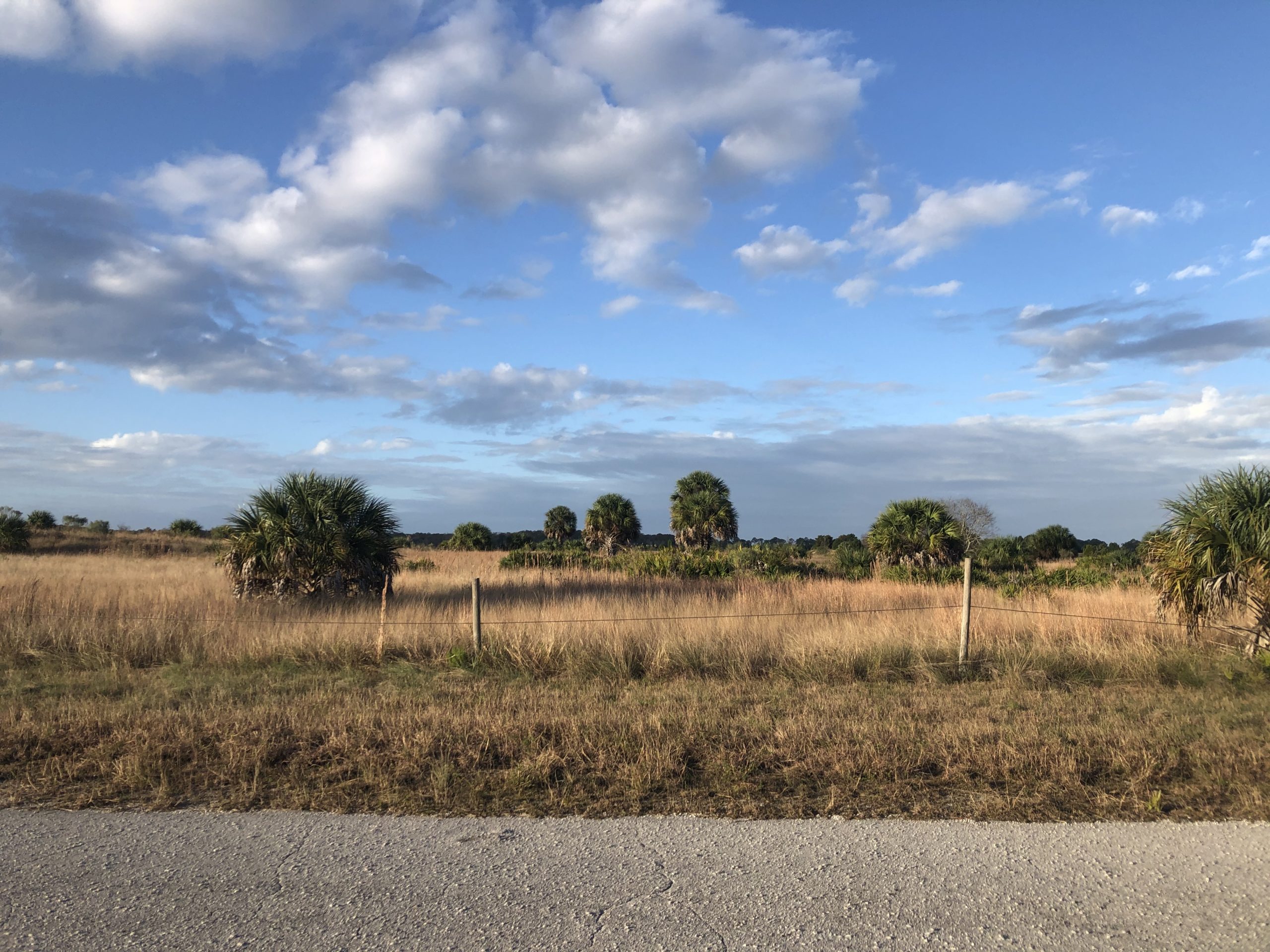 | Description | Weekiwachee Preserve is a flatlands habitat that offers great opportunities for finding sparrows in the wintertime. |
| Photography Advice | Take the longest lens you’re willing to carry. There are over 10 miles of flat trails here, many of them paved. On the second and fourth Saturday of the month, you’re allowed to drive in from the south entrance of the park, which cuts down on the walking. |
| When to Go | Winter |
| Species Photographed (1) | Hooded Oriole |
| Website | https://www.swfwmd.state.fl.us/recreation/weekiwachee-preserve |
| eBird | https://ebird.org/hotspot/L499776 |
| Google Map | Click here to view Google Map |
| Trail Map | Trail Map |
| My Posts | View my 1 posts from Weekiwachee Preserve |
Wekiva Springs State Park
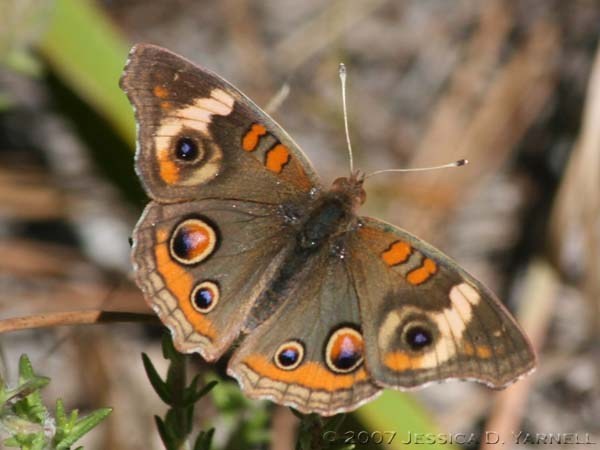 | Description | Wekiva Springs State Park is a good spot for finding warblers during spring migration. I want to go back to find a Bachman’s Sparrow! |
| Photography Advice | Take the longest lens you want to carry on a hike |
| When to Go | Year Round |
| Species Photographed (3) | Eastern Towhee, Gray Catbird, Tufted Titmouse |
| Website | https://www.floridastateparks.org/parks-and-trails/wekiwa-springs-state-park |
| eBird | https://ebird.org/hotspot/L1459994 |
| Google Map | Click here to view Google Map |
| Trail Map | None |
| My Posts | View my 1 posts from Wekiva Springs State Park |
Winter Park Osprey Nest
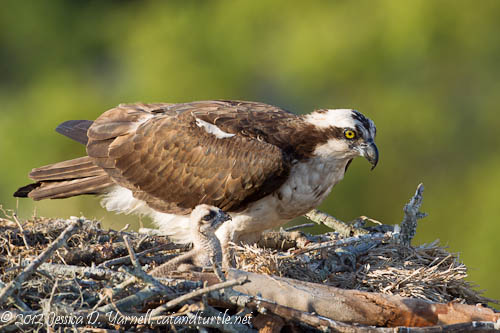 | Description | An Osprey nest on top of a facilities pole provides great photo opportunities for those who stand on the top story of a parking garage across the street! |
| Photography Advice | None |
| When to Go | March through May |
| Species Photographed (1) | Osprey |
| Website | None |
| eBird | None |
| Google Map | None |
| Trail Map | None |
| My Posts | View my 9 posts from Winter Park Osprey Nest |

